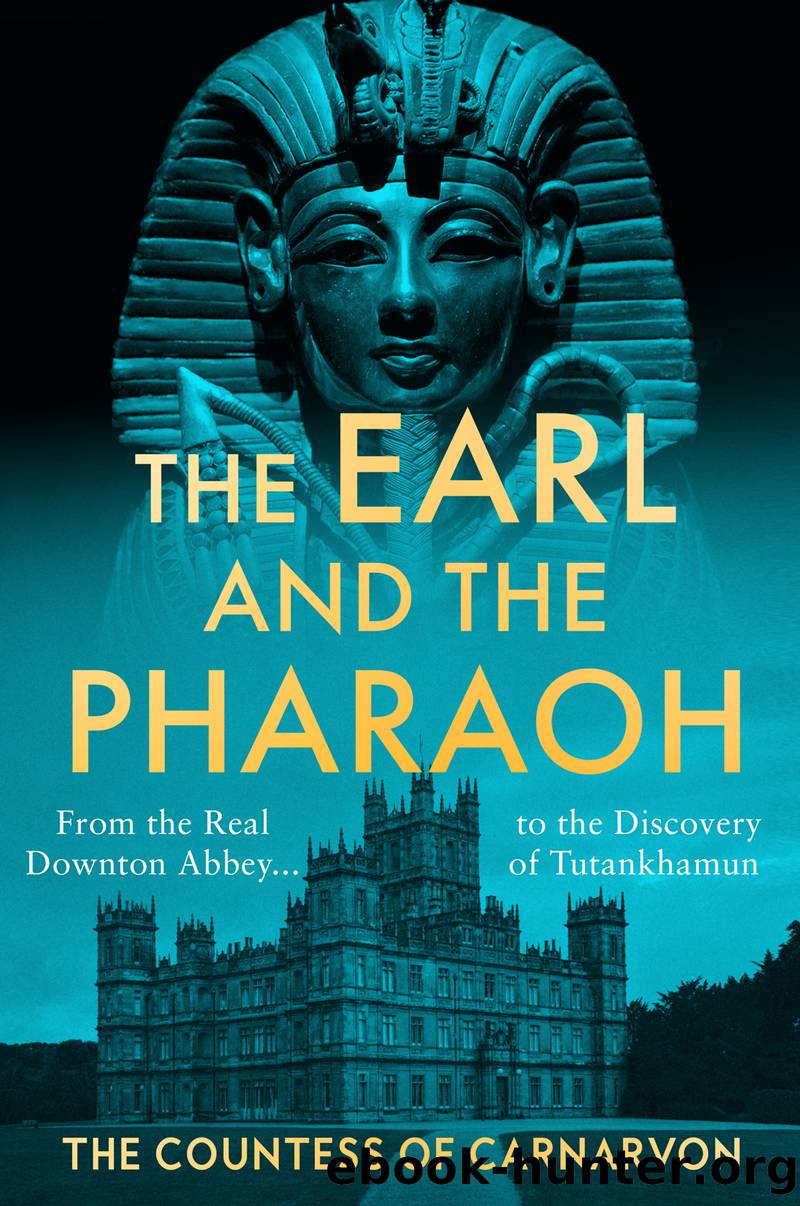The Earl and the Pharaoh by The Countess of Carnarvon

Author:The Countess of Carnarvon
Language: eng
Format: epub
Publisher: HarperCollins
Published: 2022-10-14T00:00:00+00:00
24
Five Years at Thebes
Highclere Castle Archives.
IN JANUARY 1912, the Carnarvons arrived back at Luxor. Carnarvon went to review the work at Deir el Bahri to find Herbert Winlock in quite a state. Normally a relaxed, happy man, he was on edge due to the imminent arrival of J. P. Morgan. These excavations were larger than so far undertaken by the Metropolitan Museum and had been funded through the support of both Morgan and Mr Edward Harkness, who wanted to see how their money was being spent.
With the help of Maspero and his French deputy Georges Daressy in the Antiquities Department, Davis was preparing a report on the tombs of Horemheb and the alleged Tutankhamun tomb. Davis wrote a preface summarizing the work since 1903 and reflected that he had found seven important decorated and inscribed tombs as well as nine undecorated or unassigned ones. He famously concluded: âI fear that the Valley of the Tombs is now exhausted.â
Horemhebâs tomb KV57 was indeed Davisâs last great discovery, and it really should have been attributed to Harold Jones. Davis did remember to thank Harry Burton who took over one hundred photographic records but never mentioned Jones, preferring to keep the glory to himself.
Davisâs final two short chapters concerned a note on the life and reign of Tutankhamun. Maspero begins: âVery little is known about the origin of this King.â Many eminent Egyptologists, including Wilkinson, Leeman, Rougé and Mariette, had concluded, from vague inscriptions left on disparate monuments, that his father was a pharaoh and he had married the lady Ankhesenamun a daughter of the Pharaoh Akhenaten. Davis concluded from the linens he had found that Tutankhamunâs reign had lasted at least six years. Flinders Petrie thought that he had lived at Tel el-Amarna but had not been buried there and that, following his residency at Thebes, Tutankhamun had been very active in restoring the supremacy of the old religion based around Amun although part of his work may have been usurped by his successor Horemheb. Maspero concluded he may or may not have had children: âAiya replaced him on the throne and buried him. I suppose that his tomb was in the Western Valley, somewhere between or near Amnenothes III and Aiya . . . his mummy and its furniture were [later] taken to a hiding place . . . Davis found what remained of it after so many transfers and plunders. But this is also mere hypothesis and, the truth of which we have no means of proving or disproving.â All in all, a triumphantly academic way of saying that really not much was known and certainly nothing had really been proved.
Carnarvon had returned to his endeavours with much enthusiasm though his knee was bothering him â a legacy of his accident â and riding a donkey each day was not a good way to improve it. However, life soon took on a more morose tone. First, Almina received the sad news that her brother, Captain Alfred Wombwell, had died. He was only 42, but his health had been compromised after an injury in the Boer War.
Download
This site does not store any files on its server. We only index and link to content provided by other sites. Please contact the content providers to delete copyright contents if any and email us, we'll remove relevant links or contents immediately.
Machine Learning at Scale with H2O by Gregory Keys | David Whiting(4179)
Never by Ken Follett(3790)
Harry Potter and the Goblet Of Fire by J.K. Rowling(3774)
Unfinished: A Memoir by Priyanka Chopra Jonas(3332)
Fairy Tale by Stephen King(3220)
The Man Who Died Twice by Richard Osman(2997)
Will by Will Smith(2792)
Rationality by Steven Pinker(2291)
The Dark Hours by Michael Connelly(2243)
Can't Hurt Me: Master Your Mind and Defy the Odds - Clean Edition by David Goggins(2227)
It Starts With Us (It Ends with Us #2) by Colleen Hoover(2198)
The Storyteller by Dave Grohl(2171)
The Dawn of Everything: A New History of Humanity by David Graeber & David Wengrow(2122)
Friends, Lovers, and the Big Terrible Thing by Matthew Perry(2119)
The Becoming by Nora Roberts(2087)
The Stranger in the Lifeboat by Mitch Albom(2050)
Cloud Cuckoo Land by Anthony Doerr(2035)
Einstein: His Life and Universe by Walter Isaacson(1967)
Love on the Brain by Ali Hazelwood(1965)
